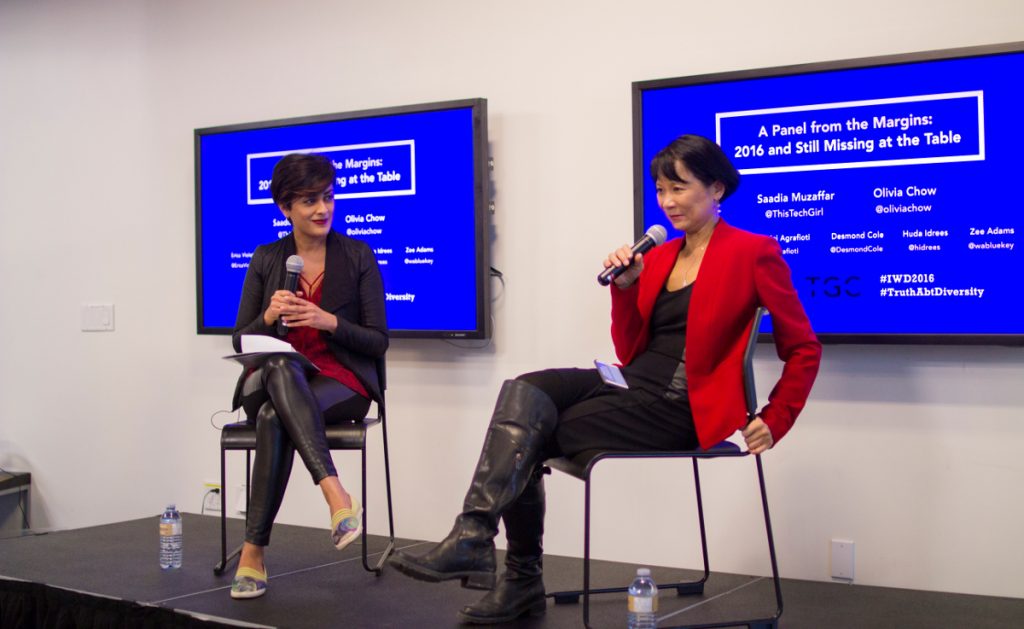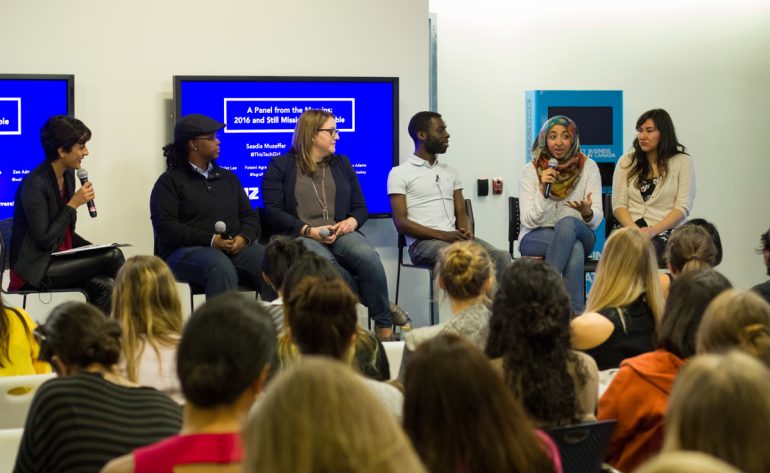There’s a mythology surrounding many of the world’s best-known CEOs and entrepreneurs — stories of living in parents’ basement, raising just enough money to survive, and a persistence that eventually pays off. In the end, these stories perpetuate the idea that if there’s one career path that judges based on the merits of its players, it’s STEM (Science, Technology, Engineering and Math).
But what if those paths aren’t the same for everyone? For many marginalized groups, the signs and signals that Silicon Valley sends point to one conclusion: you are an outsider. Michael Moritz, venture capitalist for Sequoia Capital, famously said they are open to hiring women but refuse to “lower their standards.” There are countless stories of women quitting or being pushed out of companies due to a toxic workplace culture and sexual harassment.
And even when companies make the push with diversity initiatives, it can backfire; Overall, white women are still the main benefactors of affirmative action initiatives. When marginalized groups pursue entrepreneurship for themselves, depressing stats like those showing black female founders basically receiving zero venture capital funding, or that 76 percent of VCs are white and male paint a picture of an old boys’ club that’s impossible to break into.
On International Women’s Day, the DMZ, in partnership with TechGirls Canada, hosted discussions tackling issues of diversity in STEM and entrepreneurship, with speakers who talked about the challenges of being outliers in their sector and being inspired to support the next generation.

Moderated by Saadia Muzaffar, founder of TechGirls Canada, the event kicked off with Muzaffar sitting with former NDP member of parliament Olivia Chow. “I see myself as a conduit. I work with people who need more power to seize more power, and I work with them so they can access this change,” Chow said.
The panel discussion that followed included indigenous youth activist Erica Violet Lee, personal security engineer Foteini Agrafioti, founder and former CTO of Nymi, journalist Desmond Cole, Wealthsimple head of product and design Huda Idrees, and Somanda founder Zee Adams.
While Lee is mostly known as an activist, she said that she’s been interested in tech since she was young after finding an old Mac computer in an alleyway and teaching herself how to code. “I never considered pursuing it because it was something that I was pushed out of,” said Lee, who only pursued computer science again near the end of her undergrad. “This is so important, especially for indigenous communities. Working with Idle No More, I realized there’s a lot of power in using the internet and programming and tech, and we need it now to help defend our lands and waters.”
Currently, rural and indigenous communities in Canada lack access to affordable and reliable internet — only about 25 percent of indigenous people living in indigenous communities have access to high-speed internet.
Speaking from the design perspective, Idrees pointed out that having a design team that represents the groups of people that are using your product is integral to creating a good product. When VR was being developed in the early days, it wasn’t until much later that people realized that VR gave women nausea, while there have been issues with air bags being optimized for the average-sized man that can kill women on impact.
“I see myself as a conduit. I work with people who need more power to seize more power, and I work with them so they can access this change.”
– Olivia Chow
“It shows what happens when you don’t have a representative design team, and I try to push for the community that we’re building for; we need to represent them,” she said. When she was at Wave, it was important that the designers themselves could use the product and be business owners themselves. “People will be apprehensive because nobody likes change. It gets tiring a bit when you’re the only person, and a huge part is just lifting up other minorities and bringing them into the fold.”
“The [meritocracy] kool-aid is really strong in tech,” said Agrafioti. But working in a male-dominated field as she pursued her PhD, Agrafioti said it was easy for her to internalize stereotypes about women and become a perpetuator of these myths. Once when hiring for a developer position and interviewing a female developer who was clearly the best candidate for the job, she couldn’t believe she was as good as she seemed and tried to corner her before the developer ran out crying.
“I did to that woman what men did to me at the beginning of my career,” she said.
Cole acknowledged that it was important for men to be part of this conversation as men were the main benefactors of the status quo. “There’s group of people who are oppressed and hurt and held down, and we don’t talk about fact that, on the other side of that, there is someone who is benefitting from someone being held back and overlooked,” he said.
Finishing off the panel, Muzaffar said that the best thing that can be done to encourage women to pursue STEM is to get the hell out of their way. “I don’t think there was ever a problem that girls don’t want to code. We tell them over and over again that they don’t belong, and the things that they can do that are approved by society are things that are lower paying,” she said. “All these thing are connected. It’s bigger than STEM and we can’t keep having these reports coming out that keep asserting the same conclusions from 1945. And we don’t actually take the step and say, for us to get access, somebody has to relinquish their privilege.”


